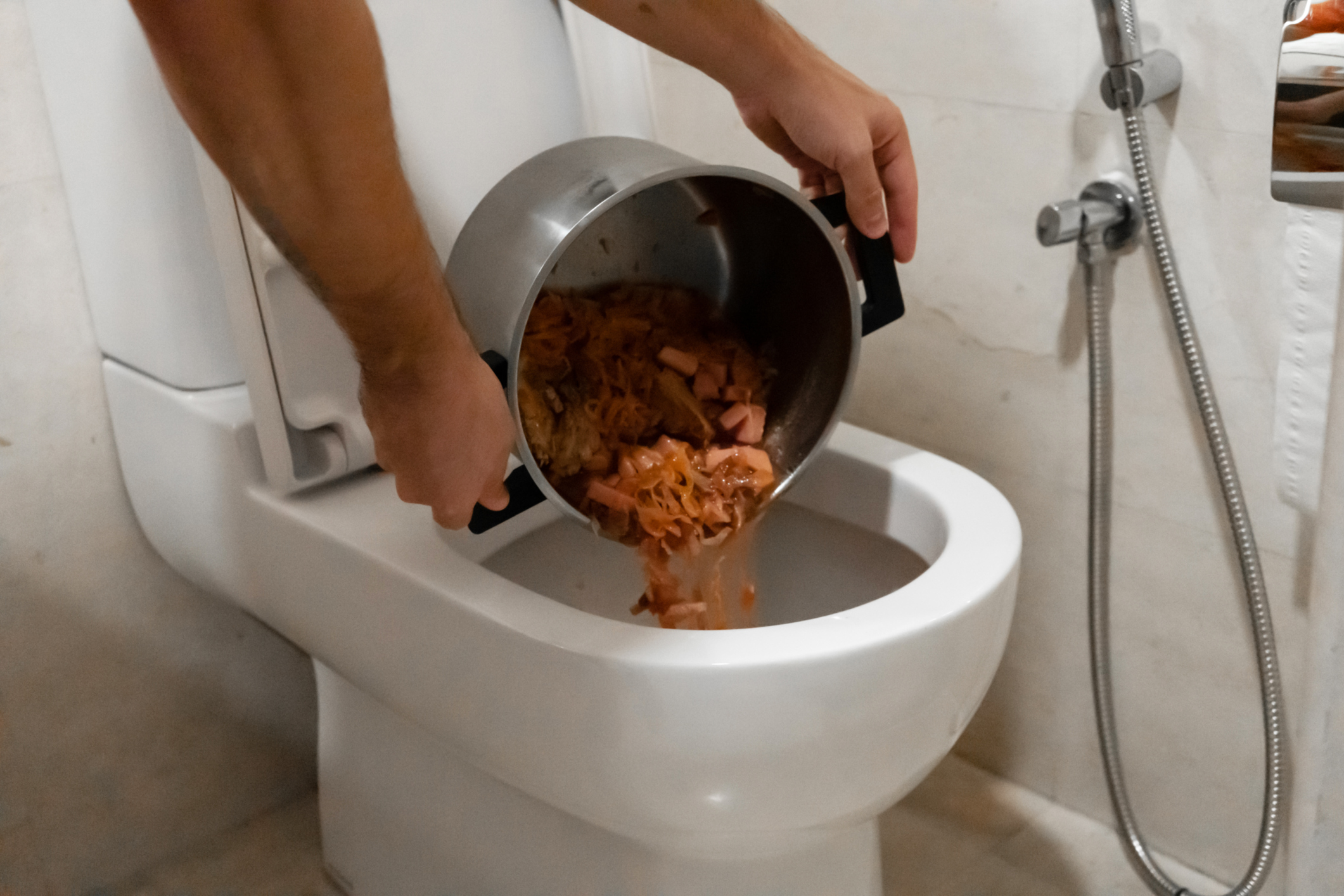Is it Sensible to Flush Food in the Toilet?
Is it Sensible to Flush Food in the Toilet?
Blog Article
Are you currently interested in critical info involving Flushing Food Down the Toilet??

Intro
Many individuals are typically confronted with the dilemma of what to do with food waste, especially when it comes to leftovers or scraps. One typical question that develops is whether it's fine to purge food down the toilet. In this write-up, we'll delve into the reasons that people may take into consideration flushing food, the consequences of doing so, and different methods for correct disposal.
Reasons that individuals may consider purging food
Lack of recognition
Some individuals might not know the prospective damage triggered by flushing food down the toilet. They may mistakenly think that it's a harmless practice.
Comfort
Flushing food down the commode may appear like a quick and very easy option to dealing with unwanted scraps, especially when there's no neighboring garbage can offered.
Laziness
Sometimes, individuals might merely select to flush food out of sheer laziness, without taking into consideration the repercussions of their actions.
Consequences of flushing food down the commode
Ecological influence
Food waste that winds up in rivers can contribute to contamination and harm marine environments. In addition, the water utilized to purge food can stress water resources.
Plumbing problems
Flushing food can cause clogged pipelines and drains pipes, causing costly plumbing fixings and inconveniences.
Sorts of food that should not be flushed
Fibrous foods
Foods with fibrous appearances such as celery or corn husks can get tangled in pipelines and create blockages.
Starchy foods
Starchy foods like pasta and rice can soak up water and swell, leading to obstructions in pipelines.
Oils and fats
Greasy foods like bacon or cooking oils need to never ever be flushed down the bathroom as they can strengthen and trigger obstructions.
Proper disposal approaches for food waste
Utilizing a waste disposal unit
For homes geared up with waste disposal unit, food scraps can be ground up and purged with the pipes system. However, not all foods appropriate for disposal in this fashion.
Recycling
Certain food packaging materials can be recycled, lowering waste and decreasing ecological impact.
Composting
Composting is an environmentally friendly way to throw away food waste. Organic materials can be composted and made use of to enhance soil for horticulture.
The relevance of correct waste monitoring
Minimizing environmental injury
Appropriate waste management techniques, such as composting and recycling, assistance lessen air pollution and maintain natural resources for future generations.
Safeguarding plumbing systems
By avoiding the technique of flushing food down the toilet, property owners can prevent expensive plumbing fixings and preserve the honesty of their plumbing systems.
Final thought
To conclude, while it might be alluring to purge food down the toilet for benefit, it is necessary to understand the possible consequences of this activity. By adopting proper waste administration techniques and dealing with food waste properly, individuals can contribute to healthier pipes systems and a cleaner setting for all.
FLUSH FOOD DOWN THE TOILET?
FLUSHING FOOD CAN CAUSE BLOCKED DRAINS IN YOUR HOME
All of the plumbing fixtures in your home are connected to the same sewer pipe outside of your home. This outdoor sewer pipe is responsible for transporting all the wastewater from your home to the Council sewer mains. Even small pieces of food that go down the kitchen sink can cause problems for your sewer. It should therefore be obvious that flushing larger bits of food, such as meat, risks a clog in either the toilet itself or the sewer pipes. Flushing greasy food is even more problematic because oil coagulates when it cools, coating the interior lining of your pipes.
THE TOILET IS NOT A BIN
Food isn’t the only thing that people shouldn’t be flushing down the toilet. People use the toilet to dispose of all kinds of things such as tampons, makeup wipes, dental floss, kitty litter and even underwear. Water goes to great lengths to educate residents about the high costs and stress placed on wastewater treatment systems simply from people flushing the wrong stuff down the toilet. It costs taxpayers millions of dollars each year, and homeowners thousands in blocked drain repairs.
FLUSHING FOOD IS A WASTE OF WATER
Flushing food is a waste of our most precious resource - water. In June this year Level 1 water restrictions were introduced to protect water supply from drought conditions. Much of New South Wales continues to be affected by prolonged drought with recent figures revealing up to 97 per cent of the state remains in drought. Depending on whether you have a single or dual flush toilet, every single flush uses between five and 11 litres of water. In the current climate this is a huge amount of water to be wasting on flushing food that should be placed in the bin (or better yet, the compost).
https://www.jabplumbingsolutions.com.au/blog/can-you-flush-food-down-the-toilet

Do you like reading up on ? Try to leave a short review down the page. We will be pleased to listen to your responses about this content. Hoping that you visit us again later on. Loved our article? Please quickly share it. Let other people discover it. Thank-you for taking the time to read it.
Get A Free Estimate Report this page